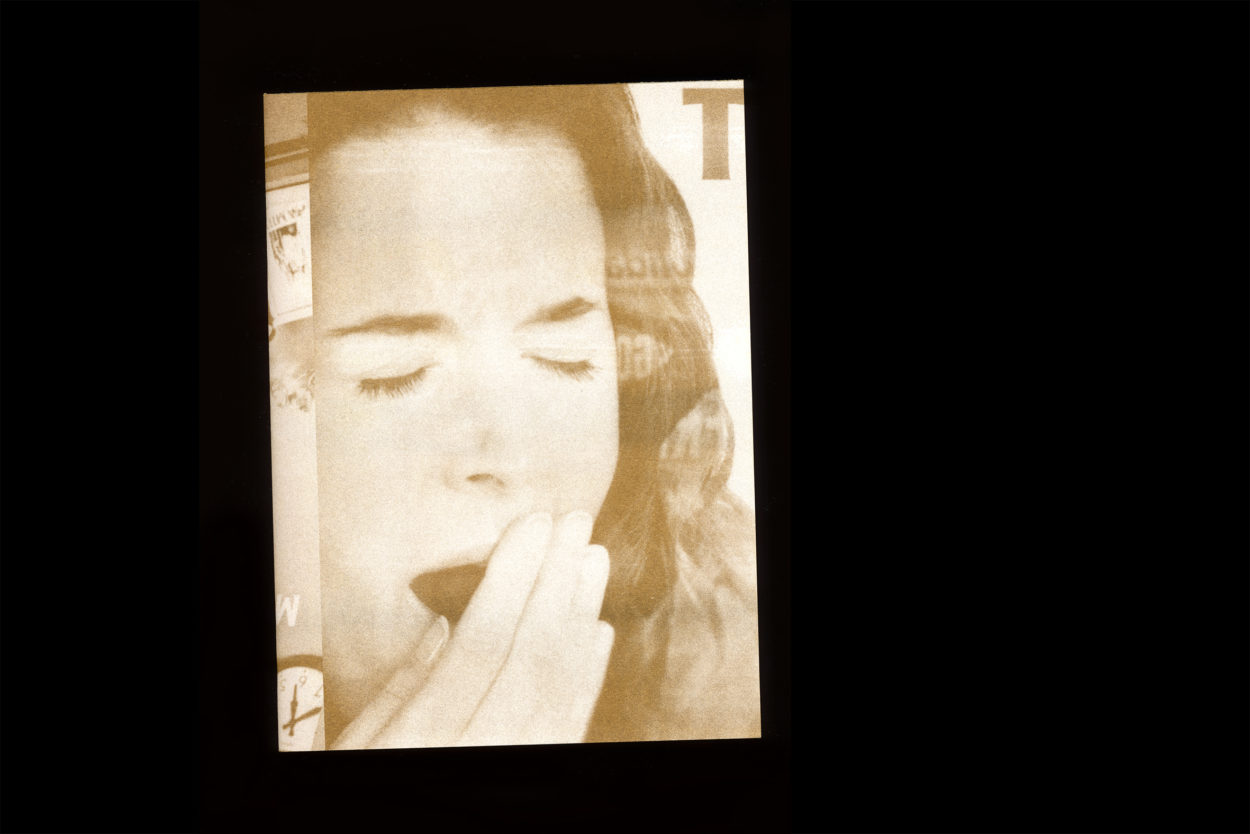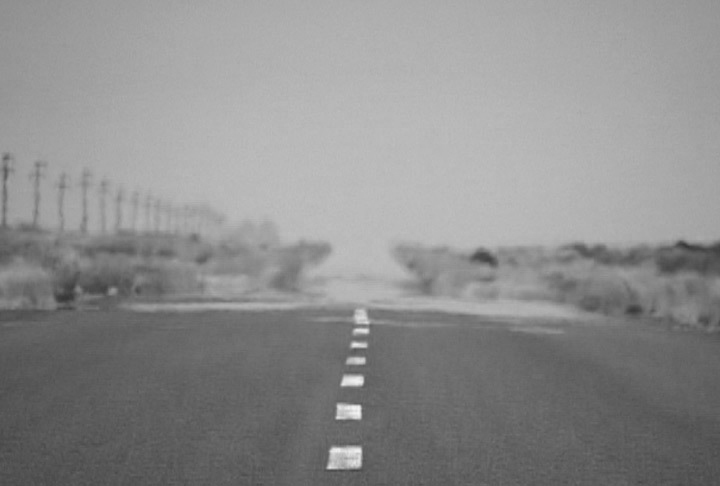Published
Toward a Common Practice—Chapter 1: Acceleration (or) Extraordinary popular delusions and the madness of crowds
While speed refers to the rate at which something occurs, the rate to which it now refers is almost exclusively quick. This simple transformation, that speed now means going fast, in itself speaks volumes of our accelerated age.
Jeremy Millar and Michiel Schwarz (1)

This chapter aims to validate a suspicion of acceleration; it argues our acclimatisation to this condition; expresses concern for its impact on the mind and body; and examines the three realms of conflict raised in the research question – individual reflection, labour and common space.
Published alongside a twinned exhibition at The Whitechapel and Photographer’s Galleries in 1998, Speed—Visions of an Accelerated Age gathers essays and art that address ‘the defining theme of our age’. Editors Millar and Schwarz write, ‘Speed is all around us; we can feel its effects even if we are unable to see it. Speed is both forceful and immaterial, like the turbulence from a moving vehicle, like the thrust of a jet, like a good idea. Speed can blow us away’. (3) Comparably, actress Fanny Kemble recounts her first railway journey in 1830, ‘You can’t imagine how strange it seemed to be, journeying on thus without any visible cause of progress other than the magical machine, with its flying white breath and rhythmical, unvarying pace’. (4) As speed continues to ‘blow us away’, it is no longer ‘strange’ but our habitual mode of existence.

The logic of incremental improvement in technology suggests ‘efficient tools for controlling the natural world and meeting specifically human goals and aspirations’, but Virilio deems this ‘the propaganda of progress’. (6) His line of thought can be evidenced in primary research which documents a widely distributed poster for Floradix – an iron supplement which mitigates fatigue – throughout Central London tube stations. (7) Woven between, posters in close proximity read; ‘Nobody gets more people to interview’; ‘Dreaming of a contemporary loft conversion?’ and ‘Mum’s all-from-frozen sweet potato pie’. Spliced together, they expose the cyclic narrative of advanced Capitalism in which production and consumption expand exponentially.
If existing markets were being saturated, then the reasonable response would be to find new markets and increase consumption, not reduce working hours. Businessmen became increasingly convinced that Americans could be persuaded to buy things produced by industry that they had never needed before and could consume goods and services, not in response to some out-of-date set of economic motives, but according to a standard of living that constantly improved.
Cited by David Frayne (8)

A Story of Deception summarises [Alÿs’] understanding of the seduction of development. If the pursuit of modernity is fatal, this work suggests, it is because it becomes ‘a chasing after the vanishing point’.
Ferguson, Fisher and Medina (10)
In accelerated culture the dominance of productivity domesticates the mind. The multiplication of laptops and smartphones offering perpetual internet access and asynchronous communication, in the form of email and instant messaging, conveniently flex time. Simultaneously these seductive devices ‘make it possible to maximise the time and place for production and minimise the unstructured travel time in between’. (11) Adorno writes, ‘unfreedom is gradually annexing ‘free time’, and the majority of unfree people are as unaware of this process as they are of the unfreedom itself’. (12) Where authentically free time is unstructured, qualitative and autonomous, ‘unfree’ time is structured, quantitative and dependent.

Musing takes place in a kind of meadowlands in the imagination, a part of the imagination that has not yet been ploughed, developed, put immediately to practical use. Environmentalists are always arguing that those butterflies, those grasslands, those watershed Woodlands, have an utterly necessary function in the grand scheme of things, even if they don’t produce and market crop. The same is true of the meadowlands of imagination; time spent there is not work time, yet without that time the mind becomes sterile, dull, domesticated.
Rebecca Solnit (14)
In accelerated culture dematerialisation alienates the body. Alarming statistics reported in 2012 by National Trust give example; 11-15 year olds in Britain spend 7.5 hours a day in front of a screen, meanwhile ‘radius of activity’ – the area around the home in which children roam unsupervised – has shrunk by 90% in 40 years. (15) These patterns have been referred to as ‘the extinction of experience’. (16) In primary research, recorded video contrasted walking with travelling on planes and trains. Made immediately obvious is a discrepancy in proximity, where the former is mobile, direct and situated, and the latter is sedentary, disconnected and fragmented. These shifts pose concerns for our collective consciousness and physical health, but also for the way that we relate to our environment.
A still from a test video in which the experience of walking was contrasted with travelling via planes and trains. (17)
The train was experienced as a projectile, and travelling on it as being shot through the landscape – thus losing control of one’s senses…. The traveller who sat inside that projectile ceased to be a traveller and became, as noted in a popular metaphor of the century, a parcel. Cars and aeroplanes have vastly augmented this transformation, and watching a movie on a jet liner 35,000 feet above the earth may be the ultimate disconnection of space, time, and experience. ‘From the elimination of the physical effort of walking to the sensorimotor loss induced by the first fast transport, we have finally achieved states bordering on sensory deprivation,’ writes Paul Virilio. ‘The loss of the thrills of the old voyage is now compensated for by the showing of the film on a central screen’.
Rebecca Solnit and Paul Virilio (18)
Under the heading Alienation, Eduardo Galeano wrote a brief essay about fisherman in a remote village of the Dominican Republic puzzling over an advertisement for a rowing machine not very long ago. ‘Indoors? They use it indoors? Without water? They row without water? And without fish? And without the sun? And without the sky?’ They exclaimed, telling the resident alien who has shown them the picture that they like everything about their work but the rowing. When he explained that the machine was for exercise, they said ‘ah. And exercise – what’s that?’.
Rebecca Solnit (19)
Research uncovered three realms that are impacted by acceleration; individual reflection, labour and common space. In the first realm, a loss of interiority occurs in the individual. Sociologist David Frayne gives an example of the archetypal rushed worker, ‘who commutes home in the dark hours with emails still to answer, feels too drained to engage emotionally with the family, and is disinclined to do very much other than drink wine and watch TV before bed’. (20) Reiterating Adorno, recovering from work is not authentic leisure but an extension of work itself. Erich Fromm proposes two modes of learning, having and being, which can be applied to modes of existence. (21) The former is acquisitive and possesses knowledge that isn’t integrated into an individual’s system of thought. The latter is inquisitive and genuinely engages with knowledge in a way that stimulates thinking processes. Productivity necessitates a practical and instrumental orientation to the world, diminishing our critical participation in it. This research asks: how might we reclaim our capacity to be thoughtful and discerning individuals?
It may be the best we can hope to see is that struggle getting sharper and bitterer day by day, until it breaks out, openly at last into the slaughter of men by actual warfare instead of the slower and crueller methods of ‘peaceful’ commerce.
William Morris (22)
In the second realm, a sense of purpose eludes labour. At the turn of the century William Morris held romantic ideals that workers might find rest, useful product and pleasure in their work. (23) Frayne writes ‘workers who today sit at their computers, performing the same tasks day in day out, may in fact relate to their labour in much the same way as the alienated industrial worker did’. (24) A 2015 YouGov survey confirms this – ‘37% of British workers think their jobs are meaningless’.(25) Workers suffer financial precarity rather than stability, toiling at fragmented or dematerialised tasks rather than varied, autonomous projects. Quantity is valued over quality, individualism over collectivism, and competition over collaboration. In opposition to the reverence we bestow upon the ‘work ethic’ David Cannon proposes a ‘worthwhile ethic’ – suggesting that there are other more valuable activities around which life might be organised. (26) This research asks: how might we shift toward labour practices prescribed by human wellbeing?
In the third realm, citizenship is diminished along with common space. In varying degrees, modern life is lived in a series of disconnected interiors, from home, to office, train, shops and gym. Smart phones, computers and televisions complete this privatisation. (27) Meanwhile, The Guardian mapped the spread of pseudo public space across London, ‘revealing an almost complete lack of transparency over who owns the sites and how they are policed’. (28) Both examples accommodate retreat from, rather than resistance to, the deterioration of public space and social conditions. Solnit writes, ‘When public spaces are eliminated so ultimately is the public, the individual has ceased to be a citizen capable of experiencing and acting in common with fellow citizens. Citizenship is predicated on the sense of having something in common with strangers, just as democracy is built upon trust in strangers. And public space is the space we share with strangers, the unsegregated zone’. (29) This research asks: how might we resist the deterioration of authentic common spaces that bring people together?
Acceleration is a complex cultural condition propelled by technology and economic policy. It’s manifestation simultaneously ‘enhances and undermines the good life’. (30) This research is concerned with understanding how a deeper sense of consciousness might exist beyond theory and be integrated in practice – establishing an ability to control speed rather than being controlled by it. The next chapter explores walking as a method of deceleration.
•
Continue to the second chapter
Notes
The chapter title Extraordinary popular delusions and the madness of crowds playfully refers to an early study of crowd psychology written by Scottish journalist Charles Mackay, first published in 1841.
References
- Millar, J. and Schwarz, M. (1998) Speed—Visions of an Accelerated Age. London: Photographer’s Gallery.
- Ibid
- Ibid
- Kemble, F. (2005) Records of a Girlhood, Gutenberg Project
- Worth, R. (2017) London is Open, Unit 4: Major Project. UAL: London College of Communication. Unpublished visual essay.
- James, I. (2007) Paul Virilio, London: Routledge. Routledge Critical Thinkers.
- Worth, R. (2017) London is Open, Unit 4: Major Project. UAL: London College of Communication. Unpublished visual essay.
- Frayne, D. (2015) The Refusal of Work. London: Zed Books.
- Ferguson, R., Fisher, J. and Medina, C. (2007) Francis Alÿs, London: Phaidon
- Ibid
- Solnit, R. (2014) Wanderlust: A History of Walking. London: Granta Books.
- Adorno, T. (1991) The Culture Industry. London: Routledge.
- Apple (2017) Freedom Calls [Advertisement]. Available at: www.apple.com/uk/apple-watch-series-3 (Accessed: 13 November 2017).
- Solnit, R. (2014) Wanderlust: A History of Walking. London: Granta Books.
- Moss, S. (2012) Natural Childhood. Swindon: National Trust.
- Ibid
- Worth, R. (2017) Walking vs. Travelling, Unit 4: Major Project. UAL: London College of Communication. Available at: www.vimeo.com/242154950 (Accessed: 24 April 2019).
- Solnit, R. (2014) Wanderlust: A History of Walking. London: Granta Books.
- Ibid
- Frayne, D. (2015) The Refusal of Work. London: Zed Books.
- Ibid
- Morris, W. (2008) Useful Work vs. Useless Toil. London: Penguin
- Ibid
- Frayne, D. (2015) The Refusal of Work. London: Zed Books.
- YouGov (2017) 37% of British Workers Think Their Jobs are Meaningless. Available at: www.yougov.co.uk/news/2015/08/12/british-jobs-meaningless (Accessed: 23 April 2017).
- Frayne, D. (2015) The Refusal of Work. London: Zed Books.
- Solnit, R. (2014) Wanderlust: A History of Walking. London: Granta Books.
- The Guardian (2017) Revealed: the insidious creep of pseudo-public space in London. Available at: www.theguardian.com/cities/2017/jul/24/revealed-pseudo-public-space-pops-london-investigation-map (Accessed: 10 February).
- Solnit, R. (2014) Wanderlust: A History of Walking. London: Granta Books.
- Millar, J. and Schwarz, M. (1998) Speed—Visions of an Accelerated Age. London: Photographer’s Gallery.